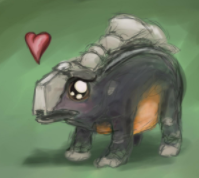Empress Celeste II
Empress Celeste II Lucienne Aurora Basile
From the day she was crowned, she was doomed. Yeong-Hui was never going to choose as her successor someone with genuine pathos and concern for the plights of her Stolisi subjects. It just was not going to happen. It would only have been through such an appointment that war could have been prevented. But there she was, Empress Celeste II, renowned for demanding blood in retribution for the Stolisi Revolt of 1235. Oh dear.
Empress Celeste II Lucienne Aurora Basile was the 14th Empress of Divinice, reigning from her coronation in 1240 to her sudden death in 1259. Her reign was fraught with conflict, with none more disastrous for Divinice than the Stolisian Wars. Her legacy is inextricably linked to these deadly events, and to the severe decline in the kingdom's reputation and power that resulted from them.
History
Early Life
Celeste was born to Lord Basilio and Lady Aurora in 1219, as the second of two daughters. Due to being a demigod, and thus being required to attend the Academy of the Divine when she was older, her family made the decision to move from Kysra to Lusca. Due to her noble birth, she was allowed to be privately tutored alongside of her older sister, before joining the Academy in 1226. Records show that she excelled in her studies and was allowed to skip multiple year levels, resulting in her graduation in 1234, aged only 15. Her subsequent application to join the Imperial Court was accepted, and she was sworn in as a Court Maiden a few months later, in early 1235.
Court Maiden
Celeste had barely adjusted to her new duties when the Stolisi Revolt of 1235 occurred. Being a member of the Imperial Court meant the young Celeste witnessed the events firsthand, as she and the court hunkered down within the palace. Luckily, none of them were injured, and punishments were swiftly handed out to many of the protestors. However, Empress Yeong-Hui made the decision to not punish the relatives of protestors or their communities, angering many within the court.
Celeste became a vocal member of the angered Maidens, arguing for harsher punishments and higher quotas within Stolisi communities, reasoning that this would scare and prevent them from uprising in future. While her suggestions were not acted upon, Yeong-Hui took a liking to this young member of her court. Celeste would soon accompany Yeong-Hui on a variety of events, such as their visit to Maleli in 1236 and their attendance to a major religious festival held in Santonia in 1238.
In 1239, Yeong-Hui officially declared Celeste to be her successor, and conferred upon her the title of Princess. Celeste stood in for Yeong-Hui in a variety of formal engagements as her health began to falter. In 1240, she became Empress Celeste II, aged only 21.
Early Years as Empress
Celeste quickly set to work on solving continuing unrest in southern Divinitian territories, implementing higher quotas on mining companies in the rich Varris Mountains and stricter punishments on rebellious activities. Many small-scale activists were arrested and charged with treason, and Stolisi cultural centres were dismantled under claims they were 'harbouring extremists'. She became very popular with northerners and rich southerners, but increasingly unpopular with the poorer residents of these regions. Tensions only became worse when she ordered a prominent Kysroan church closed for the same reasons. However, aside from minor outbreaks of violence, things seemed to be going fine.
The Stolisian War
In early 1247, reports out of Kysra suggested a burgeoning rebellion. Expecting something like the 1235 Revolt, Celeste sent a small force to back up soldiers already in the city, and focused her attention on other matters. This turned out to be unwise, for a few weeks later only a handful of soldiers returned.
The city of Kysra had been seized in its entirety, including many nearby towns, and proclaimed as the capital of the Republic of Stolisia. The movement's leader was of particular note - a demigod named Kaisa, who by all accounts was a Court Maiden until shortly before the rebellion.
Furious, Celeste ordered an invasion of Kysra. The appearance of Santonian warships off of the eastern coasts halted these plans, as the true scale of the rebellion became apparent. This would not be a mere revolt. It would be war.
Later dubbed the Stolisian War, this would prove devastating for Divinice. Despite the small republic having a limited army, they continued to repel the Divinitian military, and quickly found allies in a variety of eastern and northern states. For their part, Maleli was forced to withdraw from aiding Divinice due to a series of northern blockades and threats, and sabotage of the war effort was rife amongst Nirvejani and Tsuli communities on Nirvejan and Nuli Islands. Desertion was frequent in the Divinitian army, and on multiple occasions their positions collapsed as a result.
Celeste struggled for years to maintain control in the region, reportedly refusing the plans of her court in favour of her own, which frequently bore no fruit. After the loss of Fynwik in 1255, and the quick seizure of its surrounding areas thereafter, Celeste offered to parley with Kaisa, desperate to prevent the loss of even more major cities. This infuriated many in her court and relieved many on the front lines.
In 1256, peace was officially declared, and a border was drawn between Divinice and Stolisia. Celeste received great criticism for this, but many believed that she would be able to fix things by focusing on the Divinitians who were still under her control.
The Second Stolisian War
It's unclear how much Celeste knew about the machinations of her court and her continental allies during the winter of 1256. Some suggest she masterminded the whole affair, others suggest she was forced to go along with it, and others suggest her court acted behind her back. Others still claim that none of them were aware of what was to come, though they are largely ridiculed for this.
What is known is that, in late spring of 1256, the Stolisian capital of Kysra exploded, killing the majority of the interim cabinet. Stolisia was outraged, and war was swiftly declared, sparking the Second Stolisian War. Celeste reacted quickly, mobilising her forces to reclaim Fynwik as the Stolisian military and their allies floundered from the loss of their leaders. These early successes were bolstered by the early arrival of their allies, and large chunks of Stolisia were reclaimed for Divinice. This did not last, as Stolisia recovered and its outraged allies slammed into Divinitian port cities, and Maleli was once again restricted from joining the war effort by their furious neighbours. The international community widely condemned Divinice's actions in the area, and some of their past allies withdrew after only a few months.
The war drew back into a stalemate in 1258, and reports suggested that tides would soon turn back on Divinice once again.
The Death of the Empress
Until a definitive answer is found, this one will plague historians - did Celeste II die? Or, rather, when did she die, where, and of what? By whose hand? Those of the gods, those of blood-stained assassins, or those powdered hands of her own court?
Celeste became less and less popular with her citizens, as they blamed her for the poor state of the war and for the numerous loses sustained during it. Analysts at the time suggested that the Second Stolisian War would decide the fate of the empire at large, for a Divinitian loss would surely signal further collapse. It was a lot of responsibility to place on an Empress who never seemed altogether comfortable leading her army.
Perhaps this stress is what caused her to become suddenly ill, and pass away in 1259. She was only 40, after all, considering the average age for demigods could stretch into the high 60s. Rumours flew thick and fast of her assassination, either by The Red Stars or by a group acting on behalf of the Stolisian government. The latter categorically denied such accusations, and the former never took responsibility in a verifiable way. Whatever the case, Celeste was dead, in the middle of a war, and the rumours of assassination only served to partially rehabilitate her image. She was a martyr now, and her death would spur the Divinitian army onwards.
Under her successor, Empress Kohinoor I, Divinice was able to claim a few minor victories as Stolisia struggled to fend off the assassination accusations, before suffering devastating defeats. By the wars end in 1261, Divinice was worse off than it started, and had lost even more land.
At its conclusion, many still wondered about Celeste's death. She had appeared publically only shortly before her death, and her funeral had been private rather than public. And Kohinoor was not a demigod previously known to the public. While Celeste had not designated an heir, likely due to how young she was, it would be strange for a total unknown to take the throne in a situation like this.
Officially, Celeste died of a sudden illness, with Kohinoor claiming they could not determine how she had fallen ill, and that foul play may have been afoot. No external investigation into it has ever been allowed to proceed past the surface level. Needless to say, her death has captivated a great many minds for its mystery.












This article contained a rich background in her history and military/political strategy with just enough twists, turns, and mystery to keep me reading for more. A wonderfully solid article!